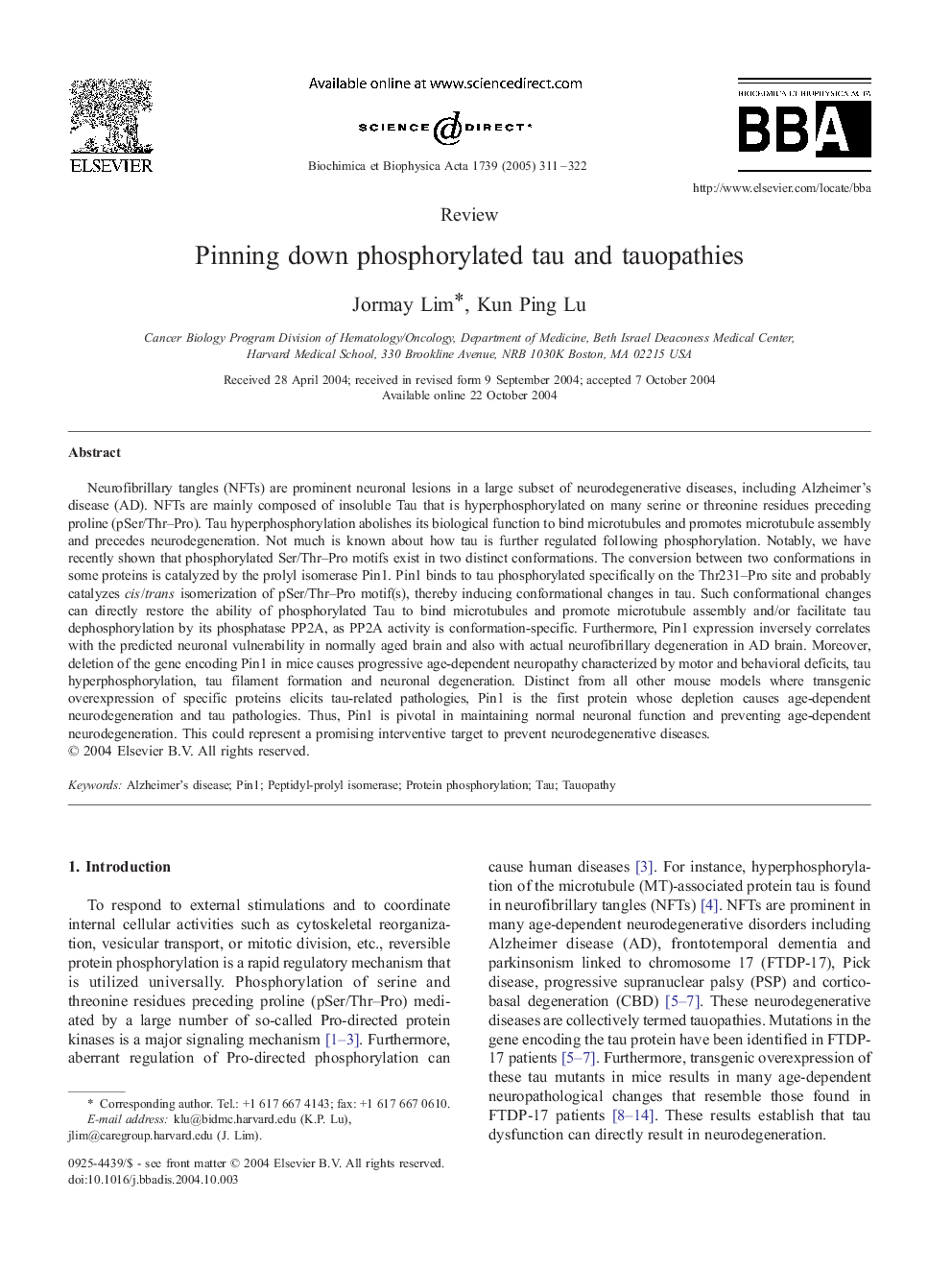| کد مقاله | کد نشریه | سال انتشار | مقاله انگلیسی | نسخه تمام متن |
|---|---|---|---|---|
| 9879527 | 1534762 | 2005 | 12 صفحه PDF | دانلود رایگان |
عنوان انگلیسی مقاله ISI
Pinning down phosphorylated tau and tauopathies
دانلود مقاله + سفارش ترجمه
دانلود مقاله ISI انگلیسی
رایگان برای ایرانیان
کلمات کلیدی
موضوعات مرتبط
علوم زیستی و بیوفناوری
بیوشیمی، ژنتیک و زیست شناسی مولکولی
سالمندی
پیش نمایش صفحه اول مقاله

چکیده انگلیسی
Neurofibrillary tangles (NFTs) are prominent neuronal lesions in a large subset of neurodegenerative diseases, including Alzheimer's disease (AD). NFTs are mainly composed of insoluble Tau that is hyperphosphorylated on many serine or threonine residues preceding proline (pSer/Thr-Pro). Tau hyperphosphorylation abolishes its biological function to bind microtubules and promotes microtubule assembly and precedes neurodegeneration. Not much is known about how tau is further regulated following phosphorylation. Notably, we have recently shown that phosphorylated Ser/Thr-Pro motifs exist in two distinct conformations. The conversion between two conformations in some proteins is catalyzed by the prolyl isomerase Pin1. Pin1 binds to tau phosphorylated specifically on the Thr231-Pro site and probably catalyzes cis/trans isomerization of pSer/Thr-Pro motif(s), thereby inducing conformational changes in tau. Such conformational changes can directly restore the ability of phosphorylated Tau to bind microtubules and promote microtubule assembly and/or facilitate tau dephosphorylation by its phosphatase PP2A, as PP2A activity is conformation-specific. Furthermore, Pin1 expression inversely correlates with the predicted neuronal vulnerability in normally aged brain and also with actual neurofibrillary degeneration in AD brain. Moreover, deletion of the gene encoding Pin1 in mice causes progressive age-dependent neuropathy characterized by motor and behavioral deficits, tau hyperphosphorylation, tau filament formation and neuronal degeneration. Distinct from all other mouse models where transgenic overexpression of specific proteins elicits tau-related pathologies, Pin1 is the first protein whose depletion causes age-dependent neurodegeneration and tau pathologies. Thus, Pin1 is pivotal in maintaining normal neuronal function and preventing age-dependent neurodegeneration. This could represent a promising interventive target to prevent neurodegenerative diseases.
ناشر
Database: Elsevier - ScienceDirect (ساینس دایرکت)
Journal: Biochimica et Biophysica Acta (BBA) - Molecular Basis of Disease - Volume 1739, Issues 2â3, 3 January 2005, Pages 311-322
Journal: Biochimica et Biophysica Acta (BBA) - Molecular Basis of Disease - Volume 1739, Issues 2â3, 3 January 2005, Pages 311-322
نویسندگان
Jormay Lim, Kun Ping Lu,